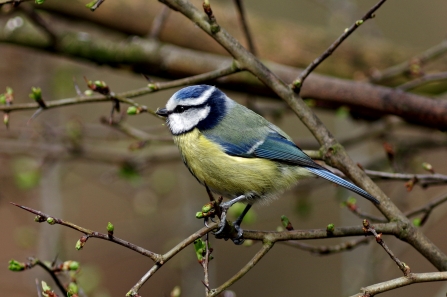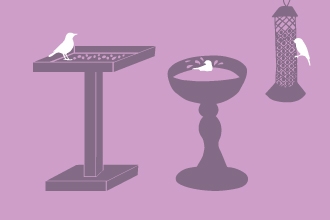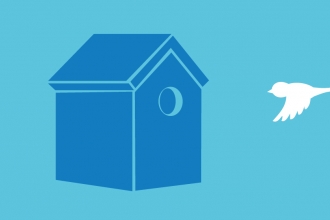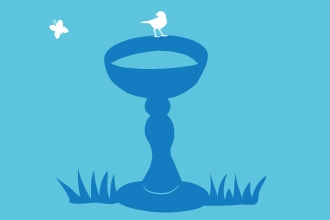Typically, male birds are more distinguishable than females. Click through to browse the species pages for more details about these birds. The UK's 10 most common garden visitors are:
Which birds am I likely to see in my garden?
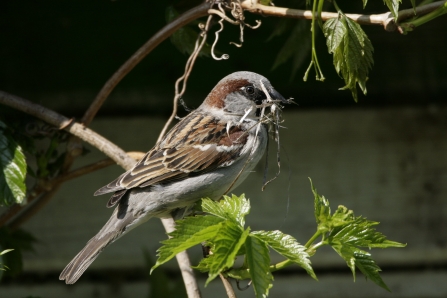
House sparrow by Vine House Farm
House sparrow
Males (pictured) are streaky brown above and grey below, with chestnut-and-white wings, a black bib and a grey cap. Females and juveniles are duller.
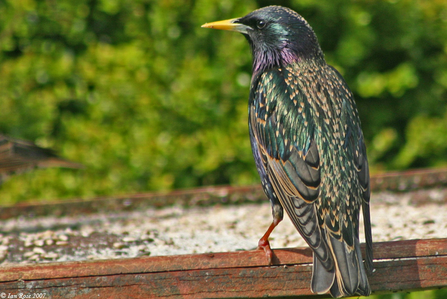
Starling by Ian Rose
Starling
Adults (pictured) are oily-black with a purple-and-green sheen, and tiny, beige spots in winter. Juveniles are dark grey-brown.
Blue tit
Greeny-blue above and yellow below, with a blue cap, white cheeks, black eye stripes, and a blue tail and wings.
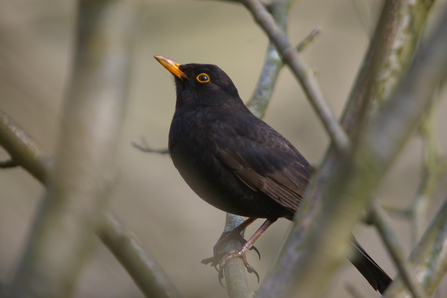
Blackbird by Neil Aldridge
Blackbird
Males (pictured) are black with a yellow bill and yellow ring around the eye. Females and juveniles are dark brown.
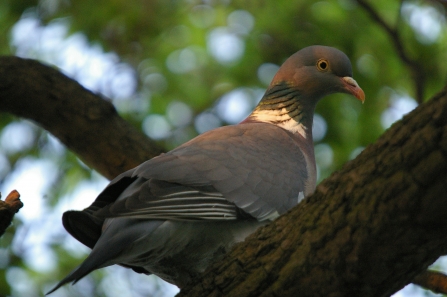
Woodpigeon by Neil Aldridge
Woodpigeon
Grey above, with a pink breast, white neck patch and white patches on the wings.
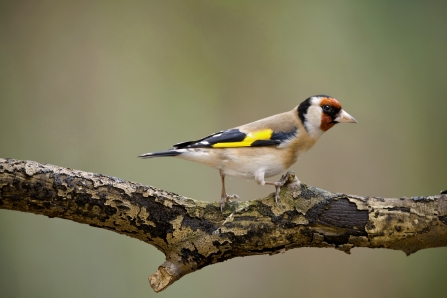
Goldfinch by Neil Aldridge
Goldfinch
Gingery-brown above and pale below, with black-and-yellow wings, a black crown, white cheeks and a red face.
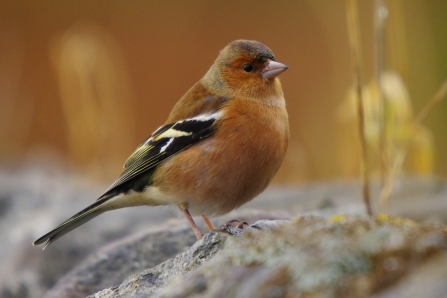
Chaffinch by James Rogerson
Chaffinch
Males have blue-grey crowns, brown backs and pink breasts. Females are brown, with white shoulder patches and wingbars.
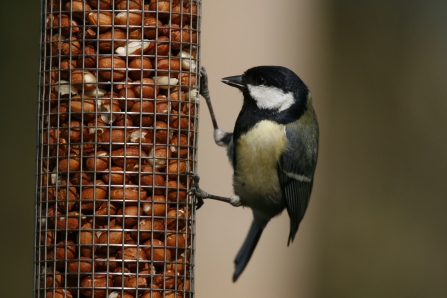
Great tit on peanut feeder by Vine House Farm
Great tit
Green above and yellow below, with a black head, white cheeks, and black stripe down its breast.
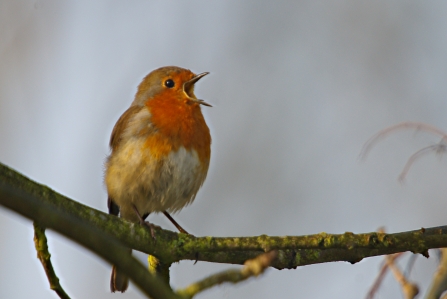
Robin by Neil Aldridge
Robin
Brown above, with a white belly and red breast. Juveniles are mottled gold and brown.
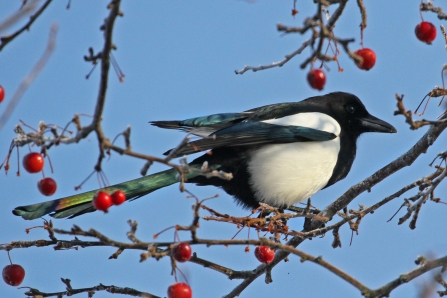
Magpie by Margaret Holland
Magpie
An unmistakable long-tailed bird. It is mainly black, with a white belly and white patches on the shoulders and wings.
Which other birds might I see?
Other species that visit gardens include long-tailed tits, carrion crows, jackdaws, collared doves, dunnocks, wrens, song thrushes, greenfinches, coal tits, swifts, house martins, and green and great spotted woodpeckers. Find out more about these birds with our species explorer.
Which rarer birds might visit?
If you live close to countryside, you might find traditional farmland or woodland species visiting, particularly in winter when food is scarce.
Look out for chiffchaffs, siskins, yellowhammers, bullfinches, nuthatches, treecreepers, sparrowhawks, jays, mistle thrushes, blackcaps, and goldcrests.
Winter garden visitors may also include migrant bramblings, redwings and fieldfares.
How can I encourage birds to visit my garden?
Whether you have a small, city patch or acres of fields, you can encourage birds to visit your garden:
- Put out suitable food on a bird table and in feeders – even one that sticks to a window will do the trick!
- Birds eat different things: try seeds for sparrows and finches, fat balls for tits, and fruit and worms for thrushes and robins. As long as it’s not mouldy, you can also pop out leftovers like fruit cake, unsalted nuts, and over-ripe apples and pears
- The amount of food you need to supply will vary depending on the season and weather; try to put out only what will get eaten, so there’s nothing left to go off
- Don’t forget to provide fresh water (in a saucer or even bin lid will do) as well, and make sure you clean feeders and tables regularly to avoid disease
- Provide places for birds to nest and rest safely by planting native trees and shrubs, or putting up nest boxes
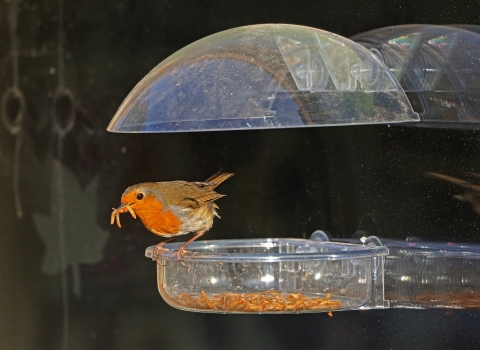
Vine House Farm
Vine House Farm Bird Food
Vine House Farm is an award-winning wildlife-friendly farm, which gives 4% of all its takings from the sale of bird food, feeders, bird tables, baths and nest boxes to The Wildlife Trusts.
Stay up-to-date with our work
Sign up below to receive the latest news from BBOWT, tips about how you can help wildlife, plus information on how you can get involved.


